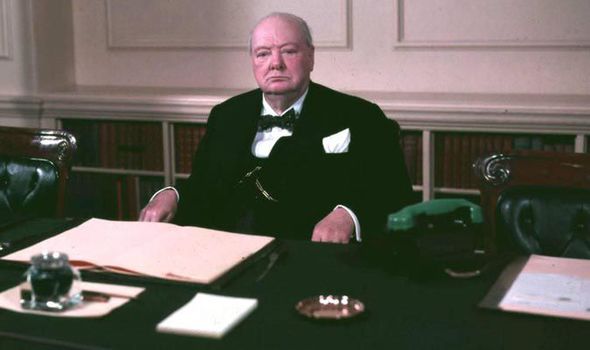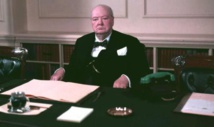The facade has lost its sign but kept the traditional crimson-red tiles once used for stations on the Underground, the oldest metro system in the world.
Now Transport for London (TfL) hopes it will be the first of seven or eight off-limits empty stations under the capital to be leased for commercial use.
"Disused stations tend to be difficult, complex environments," Graeme Craig, TfL's commercial development director, told AFP in a tunnel with cracked tiles and peeling paint.
"They are not easy to bring back to use," he said, as the eery sound of Piccadilly Line trains going through nearby Green Park station could be heard echoing through the tunnels.
"For me it would be brilliant if we can find a use for this station that reflects its history, its location, the unique space that we have," he said.
During the war, the station was first used as the emergency headquarters of the British rail system.
It was then used by Churchill and his war cabinet for meetings to avoid Nazi bombing before the better known Cabinet War Rooms in Whitehall were built.
The station is equipped with a kitchen, a dining room and a bathroom used by Churchill and his staff.
Officials believe that a jumble of telephone cables lying in a corner also points to the station's use as an underground communications centre.
"Living here can seem quite horrendous. But when the bombs were falling, you could probably feel safe," said Niall Brolly, project manager for TfL, who supervised a feasibility study for the station.
- Two years to wait? -
The plan is for the parts of the station of greatest historical interest to be opened to the public for tours, while some 400 square metres (4,300 square feet) would be leased for commercial use.
One tunnel could become a shoe shop, according to plans sketched out by the architecture firm Carmody Groarke for TfL.
The most promising space is the former lift shaft, which has a surface area of 156 square metres.
Designers say that on different levels it could host a mini-theatre or restaurant, a boutique and a bar.
Around 100 investors have shown interest and now have until June 22 to submit their proposals, TfL said.
Craig added that the new spaces could be built within the next 18 months or two years and said possible projects included museums and art galleries.
An informed source said there could even be a ghost museum, a winer cellar or storage for works of art.
Bidders can look at two other Underground stations for inspiration.
An unused part of Clapham North has become an underground urban farm and a tunnel at Charing Cross station used as a James Bond film set will be hosting cinema screenings later this month.
--------------------------------------------------------------------------------------------------------------------
Now Transport for London (TfL) hopes it will be the first of seven or eight off-limits empty stations under the capital to be leased for commercial use.
"Disused stations tend to be difficult, complex environments," Graeme Craig, TfL's commercial development director, told AFP in a tunnel with cracked tiles and peeling paint.
"They are not easy to bring back to use," he said, as the eery sound of Piccadilly Line trains going through nearby Green Park station could be heard echoing through the tunnels.
"For me it would be brilliant if we can find a use for this station that reflects its history, its location, the unique space that we have," he said.
During the war, the station was first used as the emergency headquarters of the British rail system.
It was then used by Churchill and his war cabinet for meetings to avoid Nazi bombing before the better known Cabinet War Rooms in Whitehall were built.
The station is equipped with a kitchen, a dining room and a bathroom used by Churchill and his staff.
Officials believe that a jumble of telephone cables lying in a corner also points to the station's use as an underground communications centre.
"Living here can seem quite horrendous. But when the bombs were falling, you could probably feel safe," said Niall Brolly, project manager for TfL, who supervised a feasibility study for the station.
- Two years to wait? -
The plan is for the parts of the station of greatest historical interest to be opened to the public for tours, while some 400 square metres (4,300 square feet) would be leased for commercial use.
One tunnel could become a shoe shop, according to plans sketched out by the architecture firm Carmody Groarke for TfL.
The most promising space is the former lift shaft, which has a surface area of 156 square metres.
Designers say that on different levels it could host a mini-theatre or restaurant, a boutique and a bar.
Around 100 investors have shown interest and now have until June 22 to submit their proposals, TfL said.
Craig added that the new spaces could be built within the next 18 months or two years and said possible projects included museums and art galleries.
An informed source said there could even be a ghost museum, a winer cellar or storage for works of art.
Bidders can look at two other Underground stations for inspiration.
An unused part of Clapham North has become an underground urban farm and a tunnel at Charing Cross station used as a James Bond film set will be hosting cinema screenings later this month.
--------------------------------------------------------------------------------------------------------------------









 Home
Home Politics
Politics











